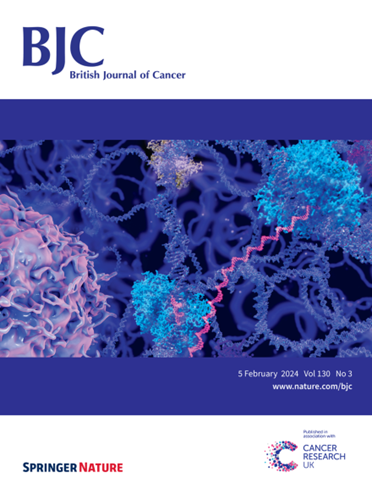Statin use and risk of breast cancer among women with benign breast disease: a Danish nationwide cohort study
IF 6.4
1区 医学
Q1 ONCOLOGY
引用次数: 0
Abstract
Statins have been suggested to protect against breast cancer risk, but the observational evidence is inconclusive. We examined the association between statin use and breast cancer incidence among women at higher risk of breast cancer due to a history of benign breast disease (BBD). Using Danish registries, we identified cancer-free women aged ≥50 years during 1996–2018 with a history of BBD and no prior statin prescriptions. Using Cox regression, we estimated multivariable-adjusted hazard ratios (HRs) with 95% confidence intervals (CIs) for invasive breast cancer through 2020 with time-varying statin use defined according to continuity, duration, and intensity (estimated average daily dose), derived from prescription data. Among 111,550 women, 7629 were diagnosed with breast cancer during median follow-up of 12.2 years. Overall statin use was not associated with breast cancer incidence (adjusted HR = 0.99; 95% CI, 0.93–1.06), with similar associations observed according to continuity and duration of use. However, long-term (≥10 years), high-intensity statin use was associated with a reduced HR of 0.75 (95% CI, 0.60–0.96). Our findings did not indicate an association for overall statin use with breast cancer incidence among women with BBD. The inverse association with long-term, high-dose statin use requires further evaluation.

他汀类药物的使用与乳腺良性疾病女性患乳腺癌的风险:丹麦全国队列研究
背景:他汀类药物被认为可以预防乳腺癌风险,但观察性证据尚无定论。我们研究了他汀类药物的使用与有良性乳腺疾病(BBD)史的高风险女性乳腺癌发病率之间的关系。方法:通过丹麦的登记,我们确定了1996-2018年期间年龄≥50岁、有BBD病史且没有他汀类药物处方的无癌症女性。使用Cox回归,我们估计了到2020年浸润性乳腺癌的多变量调整风险比(hr)和95%置信区间(CIs),根据处方数据,根据连续性、持续时间和强度(估计平均每日剂量)定义他汀类药物的时变使用。结果:在111,550名女性中,7629人在12.2年的中位随访期间被诊断为乳腺癌。他汀类药物的总体使用与乳腺癌发病率无关(校正HR = 0.99;95% CI, 0.93-1.06),根据使用的连续性和持续时间观察到类似的关联。然而,长期(≥10年),高强度他汀类药物的使用与0.75的HR降低相关(95% CI, 0.60-0.96)。结论:我们的研究结果并未表明他汀类药物的总体使用与BBD女性乳腺癌发病率之间存在关联。与长期大剂量他汀类药物的负相关关系需要进一步评估。
本文章由计算机程序翻译,如有差异,请以英文原文为准。
求助全文
约1分钟内获得全文
求助全文
来源期刊

British Journal of Cancer
医学-肿瘤学
CiteScore
15.10
自引率
1.10%
发文量
383
审稿时长
6 months
期刊介绍:
The British Journal of Cancer is one of the most-cited general cancer journals, publishing significant advances in translational and clinical cancer research.It also publishes high-quality reviews and thought-provoking comment on all aspects of cancer prevention,diagnosis and treatment.
 求助内容:
求助内容: 应助结果提醒方式:
应助结果提醒方式:


